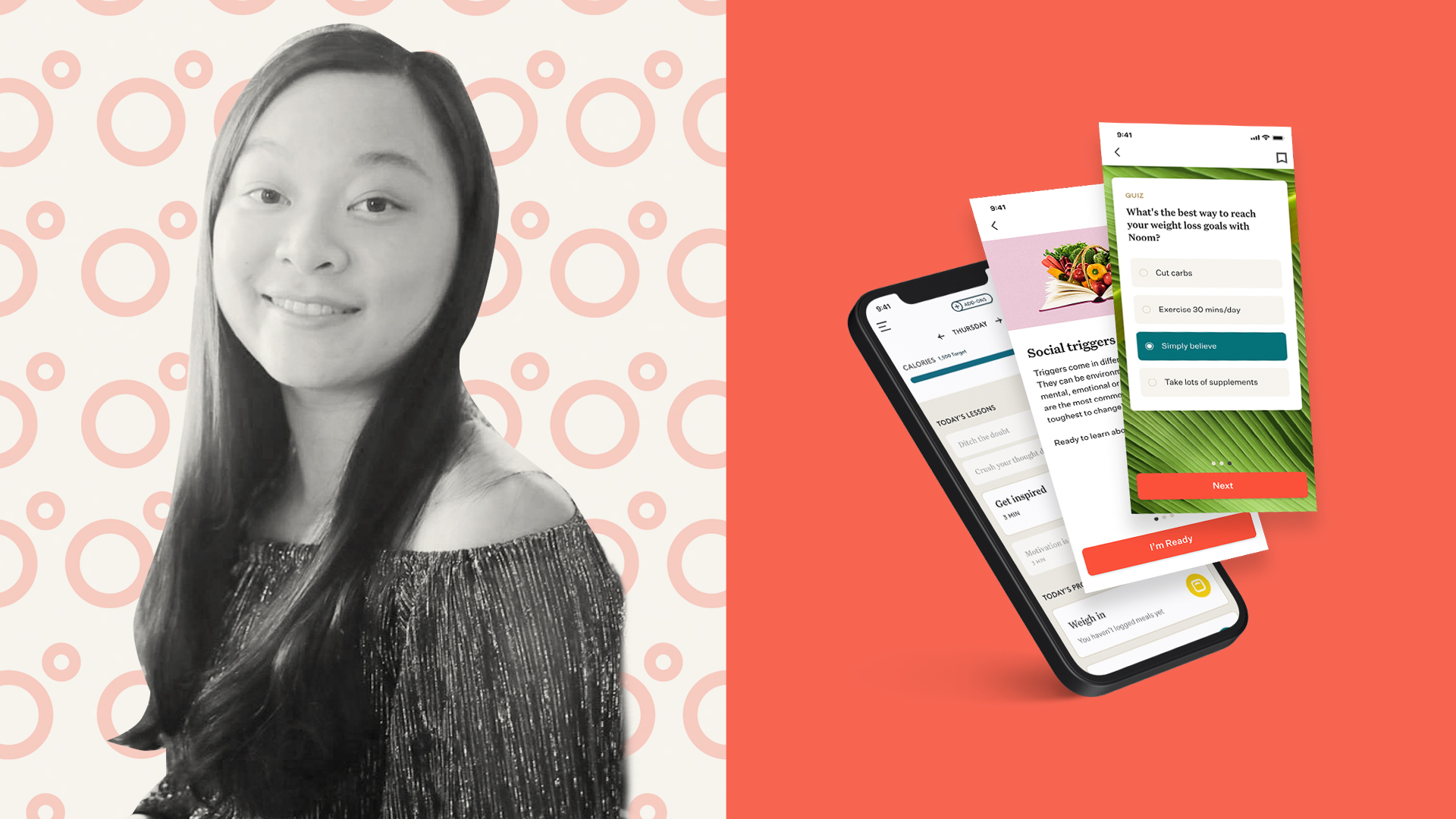
Noom comes to me during a time of change. I recently moved to a new home, reconnected with old friends, joined new social groups, and got a new hairstyle. Change has been happening internally too. I'm in my twenties, open to new experiences, and looking to embrace sustainable methods for weight loss! I first learned about Noom from social media ads on their Noom for Mental Health program. Then after doing some digging, I realized their original claim to fame was a weight loss app built around behavioral psychology. As a grad student in psychology, this was totally up my alley. I wanted to see if Noom's approach to weight loss would be a good fit for my lifestyle. It's exciting to be able to compare and contrast my perspective with other reviewers too!
What I Hope To Achieve With Noom
Despite being in generally good health for a twenty-something, and despite attending occasional fitness classes, I live a sedentary life. When the pandemic hit and I started staying home 24/7, I noticed that it was much harder to keep my weight down. This, combined with a family history of poor cardiovascular health and high cholesterol, motivated me to get on top of those risks early. Another reason for my increased health consciousness was BMI. A fact that many don't know is that Asian Americans are at increased health risk at a lower BMI compared to non-Asian individuals. I was at the Asian American BMI threshold for unhealthy weight, which prompted me to look into healthier habits.
Ultimately, I want to develop sustainable methods for reaching and maintaining my goal weight of 118 lbs (which is the midpoint of the normal BMI range for someone of my height). Let's see whether Noom does the trick.
My First Impression
Sign Up Process
The sign up process was... long. Ten to 12 minutes long. My patience wore thin at some points, but thankfully the pages were engaging enough to keep me going.
The majority of questions were within expectations ("Where did you hear about us?" and "What is your ideal weight?"), but there were one or two questions where the answer choices they offered felt insufficient for my needs. The outliers didn't impact my impression of Noom in the grand scheme of things. But, in the moment I was thinking, "oh geez, if they want me to choose between soup, salad, or sandwich, then they must want me to eat those things for my Noom diet!" (Spoiler alert: it turned out to be quite the opposite.)

Noom mapped out a timeline for losing ten pounds in two months (from 128 to 118 lbs), just in time for a wedding I plan to attend at the end of the year. My initial reaction was cautiously optimistic. I've lost weight at that pace in the past, but I used a restrictive fasting diet that wasn't the most enjoyable experience; plus, I could never get under 120 lbs. Therefore, my memories of past dieting experiences produced mixed feelings about the two-month plan. Also, I'm petite at 5' 2", and I understand that it's hard to shed those final few pounds when you don't have a lot of body mass to begin with. Hence, cautiously optimistic.
Getting Acquainted
The app has a generally easy-to-use interface where the homepage serves as a hub, and you navigate to different tabs from the hub. Per their recommendations, I linked Noom to my iPhone's Health app but I rely on Noom's built-in pedometer to track daily steps. Since I don't regularly track health activity on my phone, I can't say much about cross-device capabilities.
I received a goal specialist coach right off the bat. My coach's name is Olivia. She checks in on me a few times per week to see if I have any questions about Noom or if I need support. When first starting out with Noom, I didn't feel the need to reach out to Olivia for much. She was very understanding and respectful of my initial boundaries, which I appreciated.
Let's talk about the daily lessons. I love that each lesson comes in bite sized (1-4 minute) chunks, because the format just makes them so accessible and easy to read. They're usually quick articles on psychology (which I enjoy), or education on food, dieting, and general health (which are helpful), or celebratory motivational pieces (which are meh). Overall, the content is great! My only gripe is the writing style. It's soooooo cheesy! I can see this style being very engaging and enjoyable for other folks, but it's not my cup of tea.
The biggest and most enlightening lesson was on caloric density. It isn't a novel concept to me, but I never thought about it in terms of fullness or satiety. "Foods with low calorie density," explained one Noom lesson, "give you a lot of bang (read: fullness) for your buck." It made intuitive sense to me-- if I want to feel more full, I eat the things that fill up my belly faster. However, if I want to watch my weight, then I should aim for foods that fill me up without filling up my daily calorie limit.
While the app interface is good, I have have liked more hands-on guidance at the start of the program. For example, I stumbled upon a list of healthy recipes when playing around in the menu sidebar. A comprehensive user tutorial or an onboarding lesson would have been useful. The program is built around coursework and education, so maybe Noom can call it "student orientation"?
My Experience After 30 Days
My first 30 days using Noom have been an overwhelmingly positive experience. The biggest value I get out of Noom is the calorie tracking, caloric density color breakdown, daily step counter, and weight tracking. I find the lessons fun but they're not my main source of motivation; the other stuff are.
I use the app nearly every day. At minimum, I record my weight after waking up. I log my food nearly every day. The only thing that could have gone better was reading five minutes' worth of lessons each day. My longest lesson streak was 12 days (woot woot!), but engagement with the course content waned at the three-week mark, when a few days of heavy workload knocked me off my routine.
I have already made changes to my diet in an effort to eat more "green" (low caloric density, high nutrition concentration) foods. The biggest change has been substituting higher calorie dense breakfast foods (like scrambled eggs, bacon, and breakfast cereal) for less calorie dense foods. My current favorite is fruit smoothies with unsweetened oat milk. This change alone has curbed much of my mid-afternoon snack cravings-- a huge win!
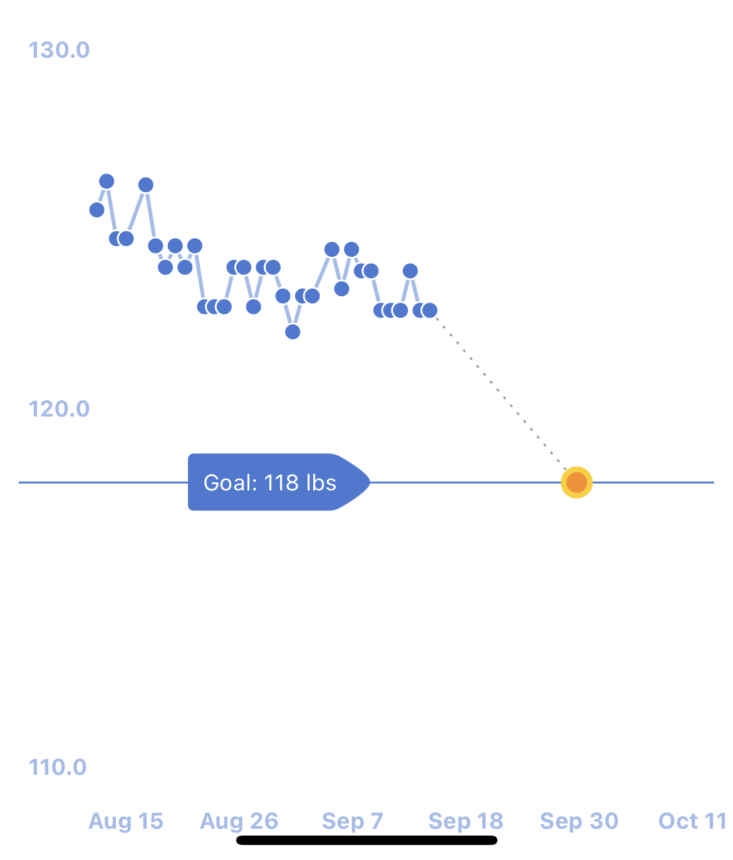
The dietary changes have made an impact on my weight, too. The original timeline that Noom created for me was to lose ten pounds in two months. My weight fluctuates from day to day, which is completely normal, but it is trending downwards. What's more, I'm already halfway to my goal weight! Only time will tell whether I can keep it up.
My Experience After 60 Days
I’ve had Noom for 60 days now, which feels like a long time and simultaneously not long at all. This weight loss journey has seen ups and downs, figuratively and literally! Overall, I have been enjoying Noom. I’m roughly halfway through the course content (part 5 out of 10 total). As a result, I have successfully made healthier food choices, and I’ve felt more knowledgeable about food and nutrition in general. Regularly logging food in the app has also helped me be more conscientious about caloric density and portion sizes.
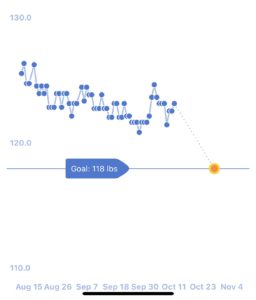
And the results speak for themselves! Noom’s ambitious plan was to help me reach 118 lbs in two months. I recall feeling cautiously optimistic about their timeline. Two months in, I haven’t hit my goal weight, not to my surprise. However, the progress is fantastic! Weight fluctuations remain a mainstay and that is a-okay. The fact that I am seeing numbers on the scale that I haven’t seen in years is promising. Plus, the changes I’ve made to my food habits have been sustainable—doubly promising.
Food Logging is Tricky
Not everything has been delightful, however. During the first month, I kept an almost daily routine of weight tracking, food logging, and reading five minutes’ worth of “coursework.” My routine was tested during month two, when changes to my usual schedule (think more family get-togethers and impromptu food adventures) has made it much more difficult to stick with Noom.
The biggest challenge is food logging, especially when the food is unpredictable. By unpredictable, I mean that I’ve been eating meals made by others, ordering out, and sharing family-style dishes more often. Each time this happens, I have little idea how many calories are in each serving, or which ingredients I should enter to make an educated guess.
What’s more, Noom’s food logging system is imperfect. Most of the time it is a painless process: search for “banana,” select a serving size, and done. Once in a while though, inconsistencies in the nutritional content and color system hinder the experience.
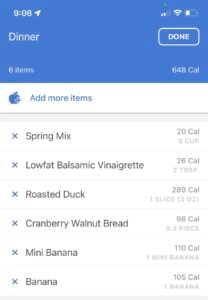
For example, look at the calories for a mini banana versus a regular banana. A regular banana is 105 calories, but according to Noom, a mini banana (which is about half the size of a regular one) is 110 calories. A quick internet search reveals that it should be about 55 calories.
Noom’s color system — a unique feature that I personally really enjoy — can also get confusing. Here’s my attempt at logging Starbucks’ Pumpkin Cream Cold Brew. Depending on which item you select from the search results, the cold brew is either a green, yellow, or red food!
I could only handle so many frustrating hiccups, and eventually, food logging became a chore rather than a rewarding experience. Without a feeling of accomplishment or mastery, I’ve felt less and less inclined to log my food. My almost perfect food logging attendance during my first 30 days dropped to logging roughly one meal per day by the end of 60 days.
Social Support
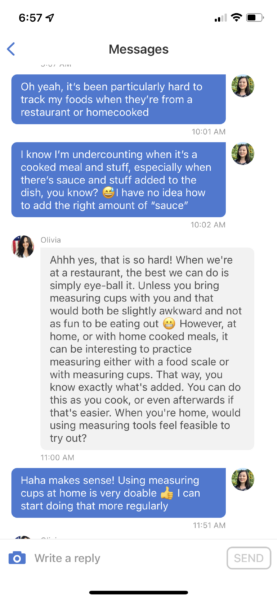
On the bright side, my goal coach has been great. During the first month of Noom, I didn’t need much support from her. When my motivation for food logging slowly waned, though, she has been super helpful for keeping me accountable to my food goals. Even if I wasn’t counting all my calories or reading my five minutes’ worth of courses, our weekly check-ins made me feel like I’m making progress.
Is Noom Harmful?
Noom has caught flak for being harmful to people recovering from eating disorders. Personally I don’t feel that Noom has triggered any unhealthy habits or behaviors, nor have I felt distressed by the things Noom wants me to do (daily weighing, calorie counting, etc.). My relationship with food has historically been neutral to positive.
That said, I can see how Noom might not be a good fit for some people. For example, Noom wants its users to do daily weigh-ins. Research shows that weighing yourself every day can help increase the success of weight loss. However, the app doesn’t address other problems that might underlie a person’s difficulties with daily weigh-ins... perhaps poor body image, or mood and anxiety concerns, or feeling guilty about food, or feeling demotivated when the numbers don’t go down as fast as you’d like, or even vulnerability to eating disorders. Instead, the app assumes that a few motivational quotes and enough scientific knowledge under your belt should quell any uncertainties.
Based on my current experiences, Noom doesn’t seriously address any of the above issues. These topics are outside the scope of a weight loss program, sure, but given their heavily psychological approach, it’s not out of left field either. To be fair, I’m only halfway through the course content. Maybe I will get to it later?
Final Thoughts 60 Days In
Now that I’m 60 days in, I would recommend this app to someone who wants to try a weight loss program and is willing to make changes to their approach to food, with one caveat: I wouldn’t recommend this to someone who might be at risk for disordered eating or who might have psychological concerns that underlie their relationship with food.
Also, I recommend doing a more affordable multi-month plan rather than the month-to-month subscription.
My Experience After 90 Days
90 days in… and my opinion of Noom has stayed largely the same as my 60-day check in. Despite spotty attendance here and there, I still enjoy the overall process of weighing myself in the morning, logging my meals, reading a few lessons, and chatting with my goal coach. The new habits I’ve formed and sustainable changes made to my meals have been very valuable.
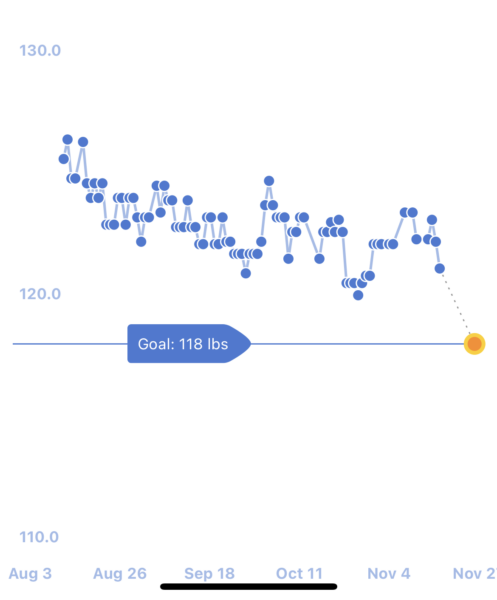
Unfortunately, I didn’t hit my goal weight. During the 60 to 90 day period I’d solidly plateaued at 121-122 lbs. This is not discouraging though! Noom assured me that plateaus are a normal part of the process, and I agree. Plus, I’ve gone down to 120 lbs during this journey, which gives me confidence that my weight loss goal is achievable. Now, with the consistent food logging, improved food choices, and improved exercise routine (more on that later), I believe I can make it to 118 lb.
A Lot of Learning
I finished 6 out of 10 courses. I didn’t get through all the lessons like I thought I would. This is probably due to low motivation. When I do read the lessons, they’re fun and helpful, but they’re not engaging enough for me to want more of it. Is it the super cheesy writing style? The amount of text on each page? I don’t know.
Out of all the lessons, the earliest one on caloric density is still the most impactful! It’s helped change the way I think about calories, portion sizes, and satiety. The lessons about exercise take the runner-up spot. I read these more recently so I haven’t had the time to let the information fully sink in. However, they provided very helpful, timely perspective on the interplay between exercise, food, hormones, and the body. I was considering making changes to my exercise routine before coming across the lessons. Reading them gave me the final push to make a realistic exercise plan and commit to my new routine.
Room for Improvement
Noom has room to grow. The interface could use some sprucing up, the navigation could still be a little better, and the food logging experience could use an overhaul. I don’t use my support group at all but felt bad about asking to leave, so I still get daily notifications from the group coach and just promptly ignore them.
Honestly, my biggest frustrations revolved around food logging. Granted, this frustration is not exclusive to Noom. I felt the same way when using MyFitnessPal to track calories several years ago. That said, Noom’s food logging system has its quirks. During my last 30 days, I ran into green vs. orange vs. red food labeling confusion more times than I could count. Also, when I couldn’t easily figure out how to break down a complex meal into smaller components, I’d just give up. And then, I found this:

With the exception of one thing, Noom did not feel personalized for me. I think the app caters best to someone who works a 9-5 job, eats three meals a day, has no dietary restrictions, and is able bodied. For example, I only eat lunch and dinner. I’ve continued to do so despite Noom emphasizing the importance of eating breakfast in several of its lessons. I also don’t work a traditional office job. When Noom offers advice on how to eat effectively with coworkers, or how to alter bad snacking habits in the break room, those things simply don’t apply to me.
What’s the exception, you ask? My goal coach! She has been the saving grace during my Noom slumps by keeping me accountable to my weekly goals and celebrating my small accomplishments along the way.
Final Verdict
I’m happy to report that Noom will remain on the first page of my smartphone after this review is complete. Despite the occasional frustrating food logging experience, or finicky user interface stuff, or cheesy writing style, I’m still losing weight! Even on my most unmotivated days, I see the value of continued use of this app. I would recommend this to friends and family but only after being very transparent about who might not be a good fit and that a certain level of commitment is needed to see results. And of course, I’d encourage them to get the most affordable subscription plan!
Check out the other reviewers' perspectives here:
- Jessica's 90 Day Noom Review
- Kelly's 90 Day Noom Review
- Salina's 90 Day Noom Review
- Geraldine's 90 Day Noom Review
Or follow along and see the complete review.


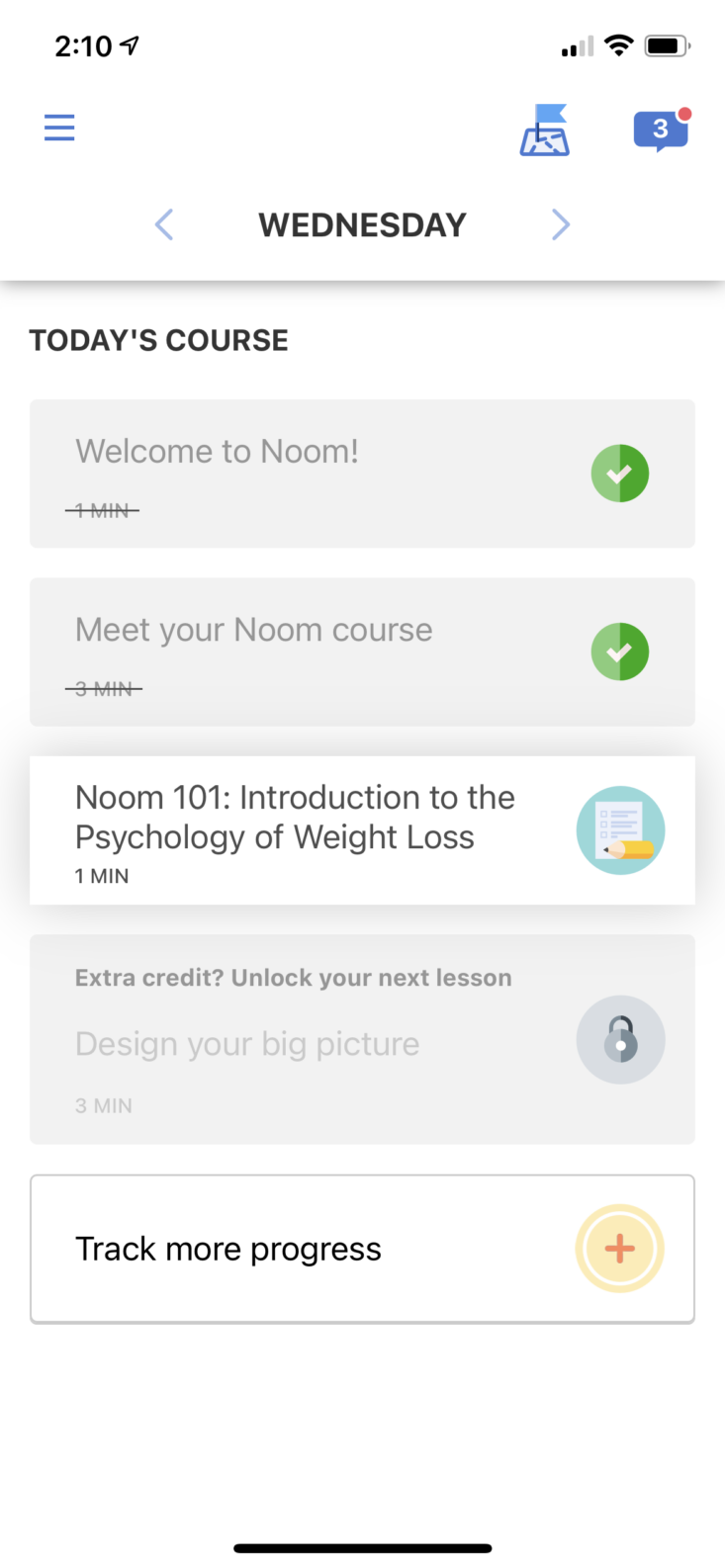
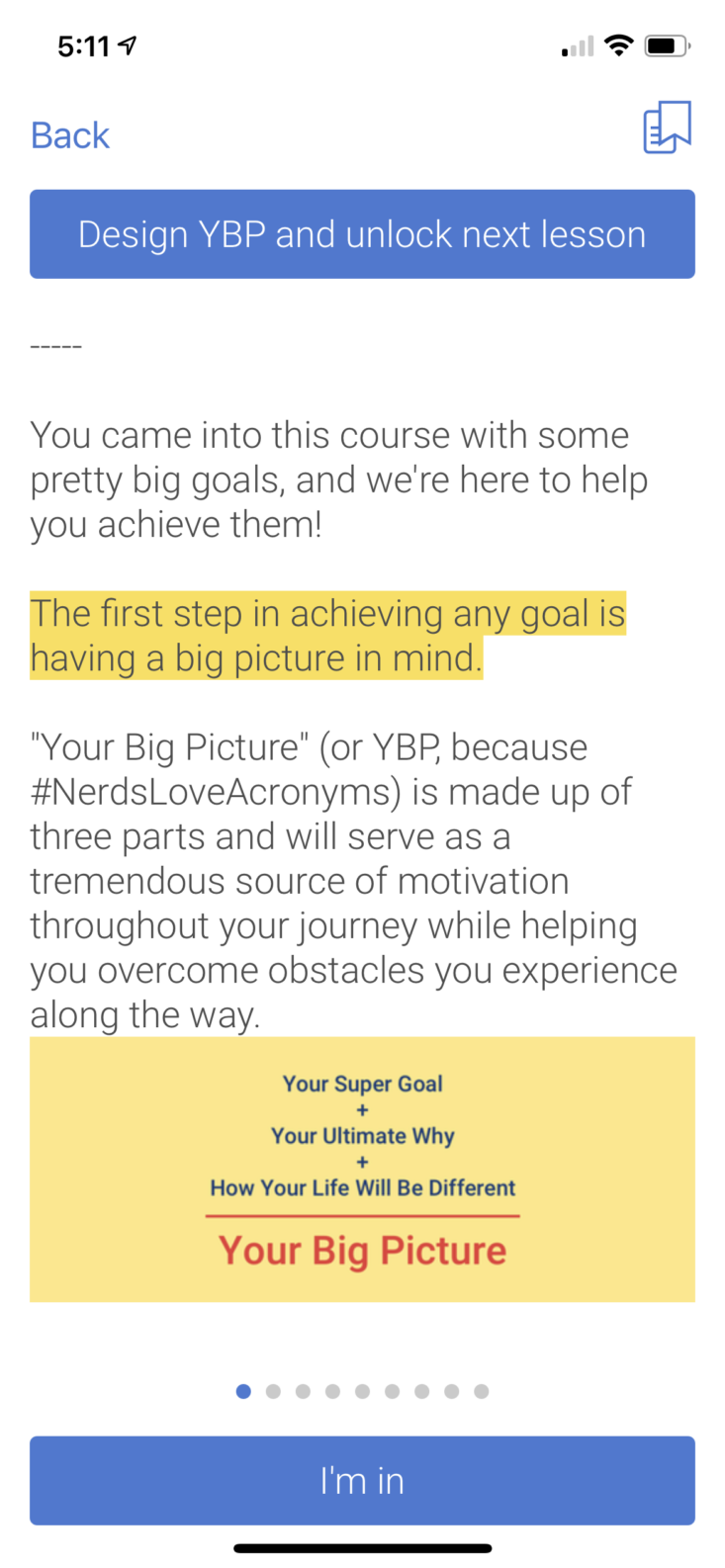
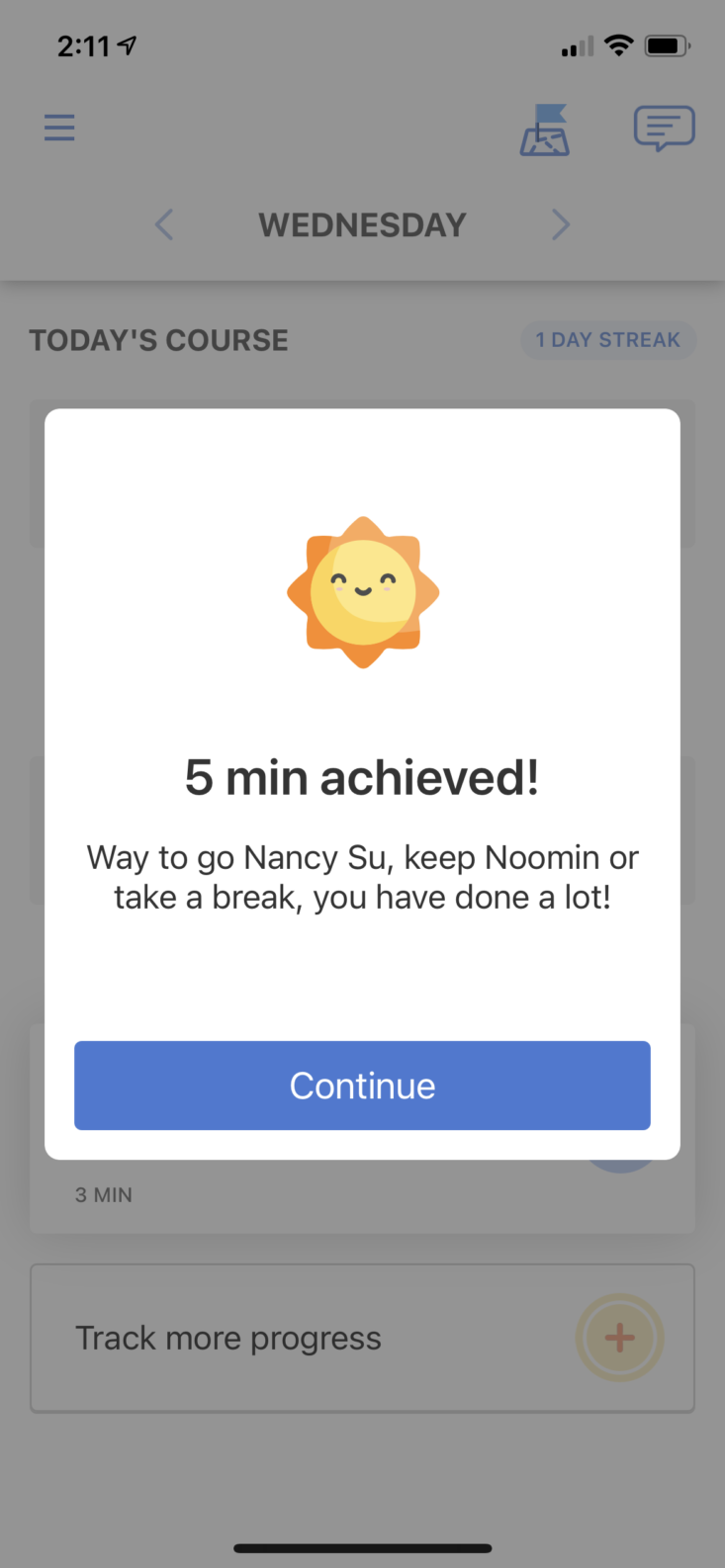

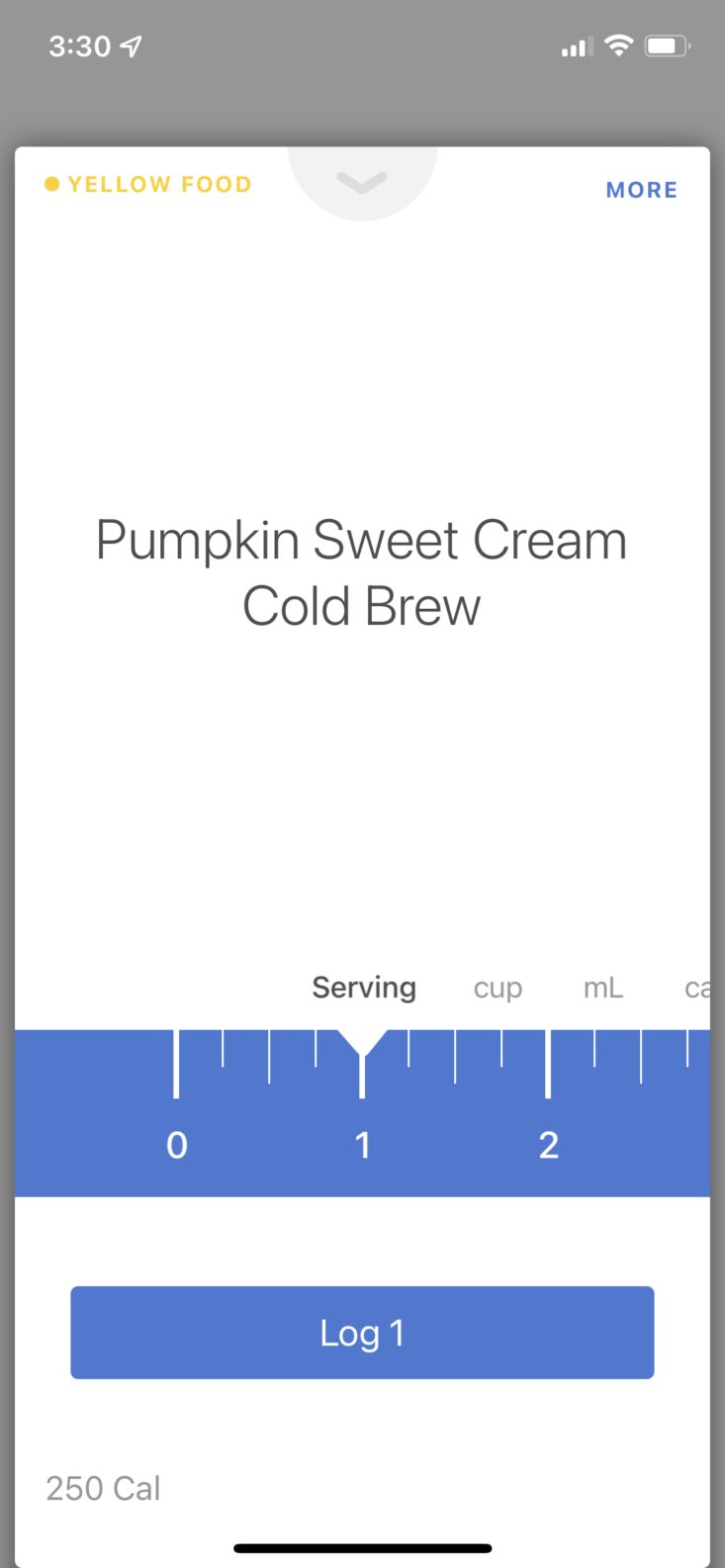



Please do not enter your email address in the Name field or in the comment content. Your email address will not be published. Required fields are marked *. Remember to post with kindness and respect. Comments with offensive language, cruelness to others, etc will not be approved. See our full comment policy here.